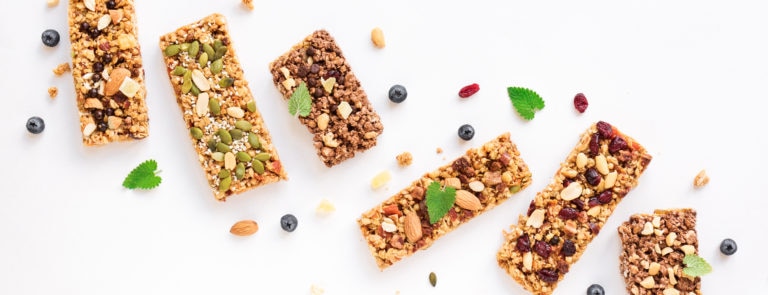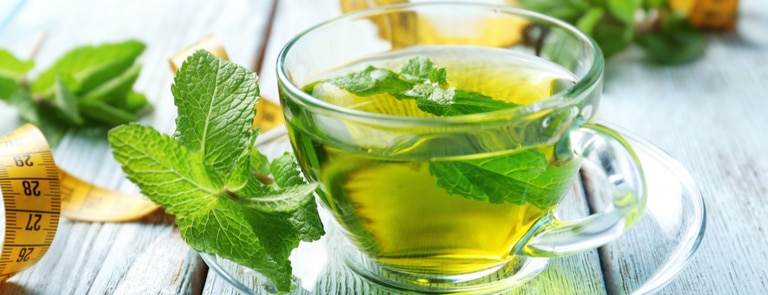10% off £35
Code:SAVE
9 of the worst processed foods and healthy alternatives

Processed foods are everywhere nowadays and it’s fair to say they have a bad rep, but are all processed foods bad for you? We’ve put together a list of 9 of the worst processed foods and the healthy alternatives you can swap them for.
Summary
1What is processed food?
Any food that has been changed in some way while it was being prepared. Simple food processing includes: Canning, drying, baking & freezing.
2Why are processed foods bad sometimes?
There are a few main reasons why some processed foods get a bad rep: fat, salt & sugar.
3Why is processed meat bad for you?
Let’s take bacon as an example, which contains very high levels of sodium and saturated fat as standard...
When it comes to what we eat, you can put foods into ‘processed’ and ‘unprocessed’ categories, e.g. an apple straight from the tree is unprocessed until it’s chopped up, put in a pie, baked and becomes processed. But does processed always mean bad, or are some processed foods good for us? Let us spill some facts on processed food and share 9 of the worst processed foods alongside their healthy alternatives.
What does processed mean?
If something has been processed, that means that it has been put through a special process or treatment to change it.
What is processed food?
Although microwave meals, shaped and breaded meat and ready meals may spring to mind when you think of processed foods, they’re not the only foods that are classed as ‘processed’.1 Define processed food: any food that has been changed in some way while it was being prepared. Simple food processing includes:
- Canning
- Drying
- Baking
- Freezing
So those cupcakes you made the other day… hate to break it to you, but they’re processed. That can of sweetcorn you tipped into your pasta bake … also processed. As you can see, some processed foods seem much healthier than others, but a lot of them tend to contain high levels of fat, sugar and salt. Other common processed foods include:
- Cheese
- Breakfast cereals
- Bread
- Tinned fruits and vegetables
- Meat products, like bacon, ham, sausage, salami and paté
- Savoury snack items, like pies, pasties, sausage rolls and crisps
- Ready meals / microwave meals
- Biscuits and cakes
- Drinks that aren’t water, like milk, squash, fizzy drinks, wine and beer
As you can see from the lists, not all processed foods are a ‘bad choice’. For example, some foods like milk need to be processed to make it safe, which is why it gets pasteurised to remove any harmful bacteria.
In the same way, some fruits and vegetables have to go through a little processing so they can be canned and remain fresher for longer. And your favourite olive oil and rapeseed oil came from little seeds that needed to be processed so you can roast and fry with them.
Why are processed foods bad sometimes?
There are a few main reasons why some processed foods get a bad rep:
- Fat
- Salt
- Sugar
These ingredients are sometimes added to the most popular processed foods to extend their shelf life, make their flavour more appealing, or sometimes to help the food be made in the first place like sugar in cakes and salt in bread. Unlike cooking meals from scratch when you know roughly how much sugar, fat and salt you have added, when you eat processed foods and meals you don’t always know what you’re eating.
Processed foods, especially microwave meals can cause people to eat more than the recommended daily allowances of salt, sugar and fat without realising. They can also come with a surprisingly high calorie count due to all the added ingredients – so if you’re not looking out for it, you may be unintentionally eating excess calories.
Processed foods and their healthy, but still tasty, alternatives
Here are some common examples of processed foods you should be wary of and the less-processed alternatives you can swap them for.

1. Hot dogs, sausages, bacon and other processed meats
What meat is processed?
All meat and fish products are processed really, unless you’re chewing on an animal carcass! But often when we are talking about processed meat, we usually mean something different.
This label is often reserved for meat that has been preserved through salting, cutting, drying or canning to enhance the flavour and preserve it.
Common processed meat examples include: Sausages, bacon, hot dogs, salami, beef jerky, corned beef, canned meat and meat-bases sauces.
Why is processed meat bad for you?
Let’s take bacon as an example, which contains very high levels of sodium and saturated fat as standard. Too much sodium can lead to problems like high blood pressure, and saturated fat has links to obesity and heart disease, so it may be worth thinking about that before piling your breakfast plate high with bacon and sausages.
The preservatives commonly used in processed meats are also a worry and have been linked to a variety of health concerns spanning from headaches to cardiovascular conditions like heart disease.2 In fact, The World Health Organisation (WHO) actually classify bacon and other processed meat as group 1 carcinogens due to the nitrates (preservative that turns the meat red/pink) they contain. This puts them in the same category of tobacco and asbestos – which should indicate how healthy they consider them to be!3 In the UK, it is advised that you eat no more than 70g a day of processed meat due to its saturated fat content. This equates to a couple slices of bacon.4
What to eat instead:
If you’re looking for something less processed on your plate for breakfast try swapping bacon for healthier options, like:
- Avocado with a rich and delicious flavour like bacon, avocado can easily replace bacon in your sarnie – go ALT not BLT!
- Eggs although eggs also contain saturated fat, they’re not on the same level as bacon, so go more eggs less bacon come brekkie
- Carrot bacon yes, you can make bacon from carrots! All you need is some natural seasonings like tahini, soy sauce, garlic powder, liquid smoke, black pepper and paprika. Marinate thin strips of sliced carrot with the seasonings and olive oil overnight and oven bake those carrots into fake-bacon perfection. It’s a great and much less processed option.
2. Cereal bars and granola bars
Cereal bars may look all innocent with their good-for-you grains, ‘healthy’ marketing images and claims that they will set you up for the day, but have you ever looked on the back of the packaging? A lot of popular granola bars are full of added sugars that your body digests quickly – so they hardly keep you feeling full.
They’re mostly made up of simple carbohydrates – not the good complex carbs we like – and often have long ingredient lists, which is a massive indicator of overly processed foods. Some research by UK consumer advocacy group ‘Which?’ on 30 of the best-selling cereal bars revealed that the fat and sugar content they contain often rival normal biscuits and fizzy drinks like Coke. They said that some of the products can be misleading and should definitely not be marketed as health foods – which they so often are.5
What to eat instead:
Now we’re not saying that all cereal bars are bad, it’s just a lot of them are. However, with a quick glance at the back of packets you should be able to decipher which ones are actually a healthy snack and which definitely are not. Some healthy snack / cereal bars include:
- Aduna Superfood Energy Bars have an impressively small ingredient list and still contain the natural energy (mainly from dates and cashews) to get you through the day
- Nakd bars these bars are made primarily from dates too, with a very small ingredient list and no added sugar. They come in so many delicious flavours like blueberry muffin and chocolate orange, so you’re bound to find one (or more!) that you like.
Still fancy some oaty-licious snacks? You can also make your own with some oats, seeds, dried fruit, granola, dates, etc. So, then you know exactly what’s going into your mid-morning snack.
3. Flavoured and coated nuts
Nuts are good for you right? Right! They usually are, but those honey-roasted cashews you like or the crunchy, spicy, coated peanuts you get out for parties, not so much. These flavoured nuts are jammed full of extra sugar and salt – which can certainly help you pack on the pounds and eventually take a toll on your heart health if you consume more than a handful regularly.
What to eat instead:
Real nuts! Toast ‘em, roast ‘em or eat them raw. When you’re in control of the ingredients, they’re much less likely to have as much added salt, sugar and fat. Natural nuts contain plenty of protein and good fats, so don’t avoid them completely – just the flavoured nuts shelf!

4. Frozen and microwave ready meals
Yeah frozen and microwavable meals are quick, convenient and normally taste at least ok… But the thing is with ready meals is that they are often loaded with excess fat, sugar and sodium.
That’s not to say that all ready meals are bad for you – there are some companies out there who are trying to make their ready-meals much lower in calories, fat, salt and sugar, but they still tend to be very low in other important nutrients.
One UK study found that out of 100 supermarket ready meals, not even one fully complied with World Health Organisation nutritional guidelines.6 Pretty shocking, no?
What to eat instead:
If you still crave the ease and convenience of ready meals, but want to enjoy nutritious food, then batch cooking and freezing could be the solution! Try making healthy meals full of fresh fruit and veg that you can pop in a container and freeze for days when you just don’t have the time. You can also do this with leftovers.
5. Microwave and ready-made popcorn
Love a bowl of freshly popped bowl of popcorn for movie night? We don’t blame you, it’s never quite the same without it. Popcorn is naturally pretty healthy too! However, when you opt for microwave or ready-made popcorn, you’re often also opting for lots of added salt and fat because of all the preservatives and flavourings that manufacturers add to it.
What to eat instead:
Make your own popcorn. All you need to do is get yourself some popcorn kernels, some oil to coat the pan you’re going to be popping them in and a little of your favourite flavouring to make it taste amazing. We like popping corn in coconut oil and drizzling it with maple syrup – mm!
6. Instant noodles
The classic student-staple and quick meal solution for busy people everywhere, instant noodles are very popular, but it doesn’t mean they’re good for you. They are highly processed, very carb-heavy, have astronomical levels of salt and sodium, and offer little-to-no nutrition.
A study on noodle consumption in college students in Seoul found that frequent consumption of instant noodles increased the risk of obesity, high cholesterol, insulin resistance and other cardiometabolic risks in otherwise healthy young adults.7 Who knew such a small package could pack such a huge health risk!
What to eat instead:
Try swapping for healthy ‘zoodles’ aka noodles made out of courgette (the Z comes from the American name for courgettes – zucchini, or see if you can find some whole-wheat noodles you can flavour yourself.
7. ‘Healthy’ fruit snacks
One of the biggest health food cons of all are the innocent-looking ‘healthy’ fruit snacks you can find in the supermarket. You know like flavoured raisins or fruit-winder type snacks that can ‘trick’ kids into getting their 5-a-day. A lot of these fruit snacks, especially the ones marketed to kids, are made from real fruit – granted. But the way they have been processed means that the normally good-for-you natural sugar has been transformed into ‘free sugar’.
What is free sugar?
Free sugar is any food added to a food or drink product, or the sugar already present in fruit juice, honey and syrup. Which? Research found that some of the most popular ‘healthy’ fruit snacks for children contain up to 84% of the free sugars a child should consume in a day (19g) and some may contain more free sugars than 3 jelly babies (14.7g)!8
What to eat instead:
Real fruit! Pure natural fruit goodness will always win in comparison to these ‘fruit snacks’ as real fruit comes with lots of other health goodies like fibre, vitamins and minerals, and a lot less sugar overall. For example, an apple contains about 10g of total sugar per 100g, and fruit snacks often quadruple that amount of sugar in the same quantity.

8. Crisps and other savoury snacks
We all know crisps and our other favourite savoury snacks are unhealthy, but did you know that they’re classed as a processed food?
They look nothing like the potatoes they once were, and have picked up a fair amount of salt, fat and sometimes sugar too.
What to eat instead:
- Try baking your own crisps by finely slicing up some potatoes, seasoning and adding a little oil
- Carrot and cucumber sticks are a lovely – still crunchy – alternative to classic savoury snacks. Try dipping them in peanut butter (the healthy kind!) or houmous
9. Butter and margarine
When margarine first became popular, it was considered by many to be a healthier alternative to butter. However, margarine contains a lot of trans fats – which is considered a very unhealthy fat, even more so than saturated fat. Studies have shown that trans fats can increase ‘bad’ LDL cholesterol, which can lead to strokes and heart disease.9
What to eat instead:
- If you want a nice spread for bread, try mashing up some avocado and using that instead or using houmous
- When baking, some nut milks like soya milk and yoghurts can replace margarine
Is bread a processed food? Technically, yes. Bread has been altered, but not in a way that is detrimental to your health. However, white bread is not considered a healthy choice. Choose wholegrain varieties instead, or even better – bake your own.
Is pasta a processed food? Yes, just like bread is a processed food, so is pasta. It doesn’t mean its unhealthy if you consume it in moderation, and pasta should not be compared to unhealthy processed foods like processed meat, snacks, etc. Choose wholegrain varieties when possible.
Is it possible to eat processed foods as part of a healthy diet?
Yes, it is possible to include some processed food healthily into your diet, you just need to get good at reading nutrition labels. Scanning the back of a cereal packet, bread bag or even ready meal can help you to compare and contrast other products that are available so you can choose one with less fat, salt and sugar.
One way this has become easier over the years is the emergence of the ‘traffic light’ system we’re sure you’ve seen already. Those red, amber and green colours in the fat, sugar and salt give us an immediate indicator of if this food is healthy or not and if it will push you over your recommended daily intake. If you want to make healthier choices, choose more greens and ambers, and reduce your red intake.
Related Articles
Shop by wellness goal
Sign up for exclusive offers
Plus, get expert advice to support your health & wellness straight to your inbox when you sign up to Holland & Barrett emails.
Read our
privacy policy














